Flagella
Flagella are long, whip-like appendages that enable locomotion, chemotaxis, and sensory functions in bacteria, protists, and sperm cells. Their structure varies in prokaryotes and eukaryotes, with bacterial flagella rotating like motors and eukaryotic ones moving in a whip-like fashion. A core NEET and Class 11 Biology topic.
This Story also Contains
- What are Flagella?
- Structure of Flagella
- Types of Flagella (Based on Organism)
- Types of Flagella (Based on Number & Arrangement)
- Microtubule Arrangement in Eukaryotic Flagella
- Function and Mechanism of Flagella
- Comparison Between Prokaryotic and Eukaryotic Flagella
- Flagella in Different Organisms
- Diseases and Disorders Related to Flagella
- Flagella NEET MCQs (With Answers & Explanations)
- Recommended Video for Flagella
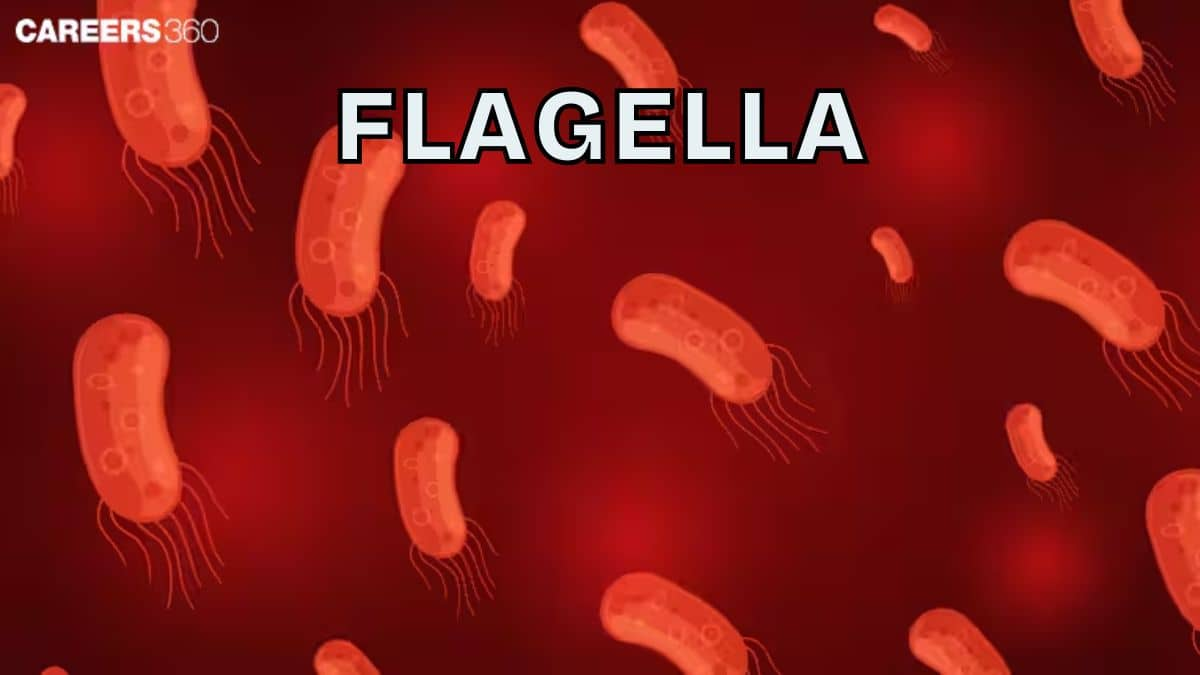
What are Flagella?
These structures are required for the mobility in organisms, such as bacteria, protozoa, and sperm cells, so that they can move through the environments, search for food, and avoid toxic compounds. Flagella are made of complex proteins. They vary in their structure between the prokaryotic and eukaryotic organisms. In bacteria, it contains a filament, hook, and base and operates like a motor while in eukaryotic flagella it has microtubules in arrangement “9+2” and moves in a pro-scion pattern.
Structure of Flagella
The structure of flagella is discussed below:
Filament
Filament is the long, twisted structure out of the flagellum that is composed of protein, known as flagellin. This structure helps to protrude from the cell surface and is essential for producing the force required for movement.
Hook
The hook is thin, a concave section that links the filament with the basal body. The structure works as a pivot to transfer the twisting effect produced by the basal body to the filament, thus enabling rotation.
Basal Body
The basal body secures the flagellum on the cell membrane and contains a motor that is responsible for the rotation. In bacteria, this motor is driven by proton motive force or sodium ions, on the other hand in archaea the ATP is used as an energy source.
Types of Flagella (Based on Organism)
Based on the organism, there are three different types of flagella:
Bacterial Flagella
Bacterial flagella consist of three main parts. The filament which is a helical structure of flagellin protein, the hook which links the filament to the motor and the basal body that are a digit that anchors the flagellum to the cell membrane and rotates.
Movement: The bacterial flagella can rotate like a propeller. As a result, it enables the bacteria to move in any liquid substratum. The rotational direction is either clockwise or anticlockwise and this must switch so that the bacterium can perform runs and tumbles for chemotaxis.
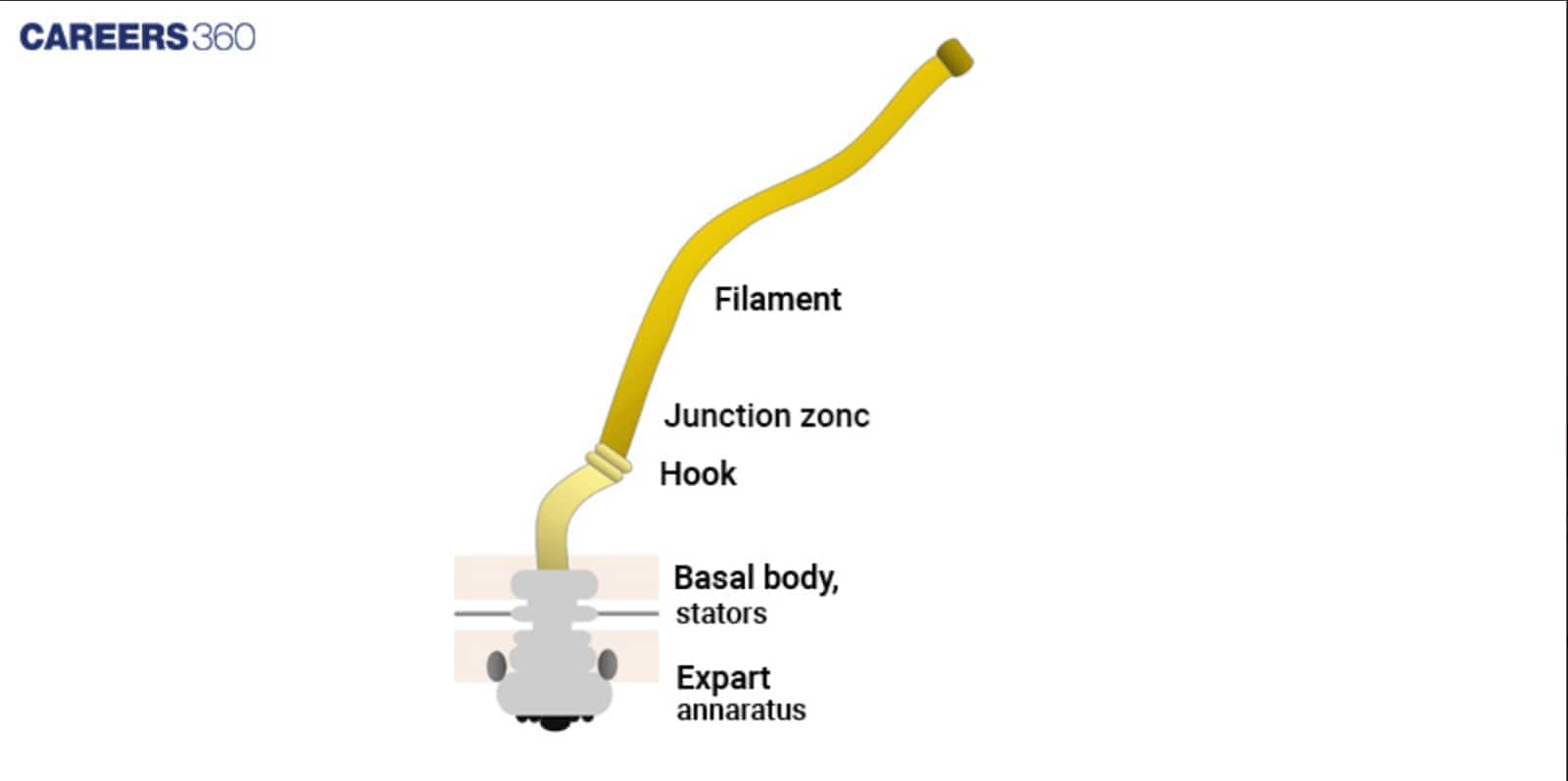
Eukaryotic Flagella
Eukaryotic flagella are made up of an axoneme, a whip-like structure that has microtubules in a specific pattern of 9+2 and dynein arms which are responsible for movement through ATP breakdown.
Movement: Eukaryotic flagella oscillates in a whip-like fashion which helps the cell to move forward in its habitat.
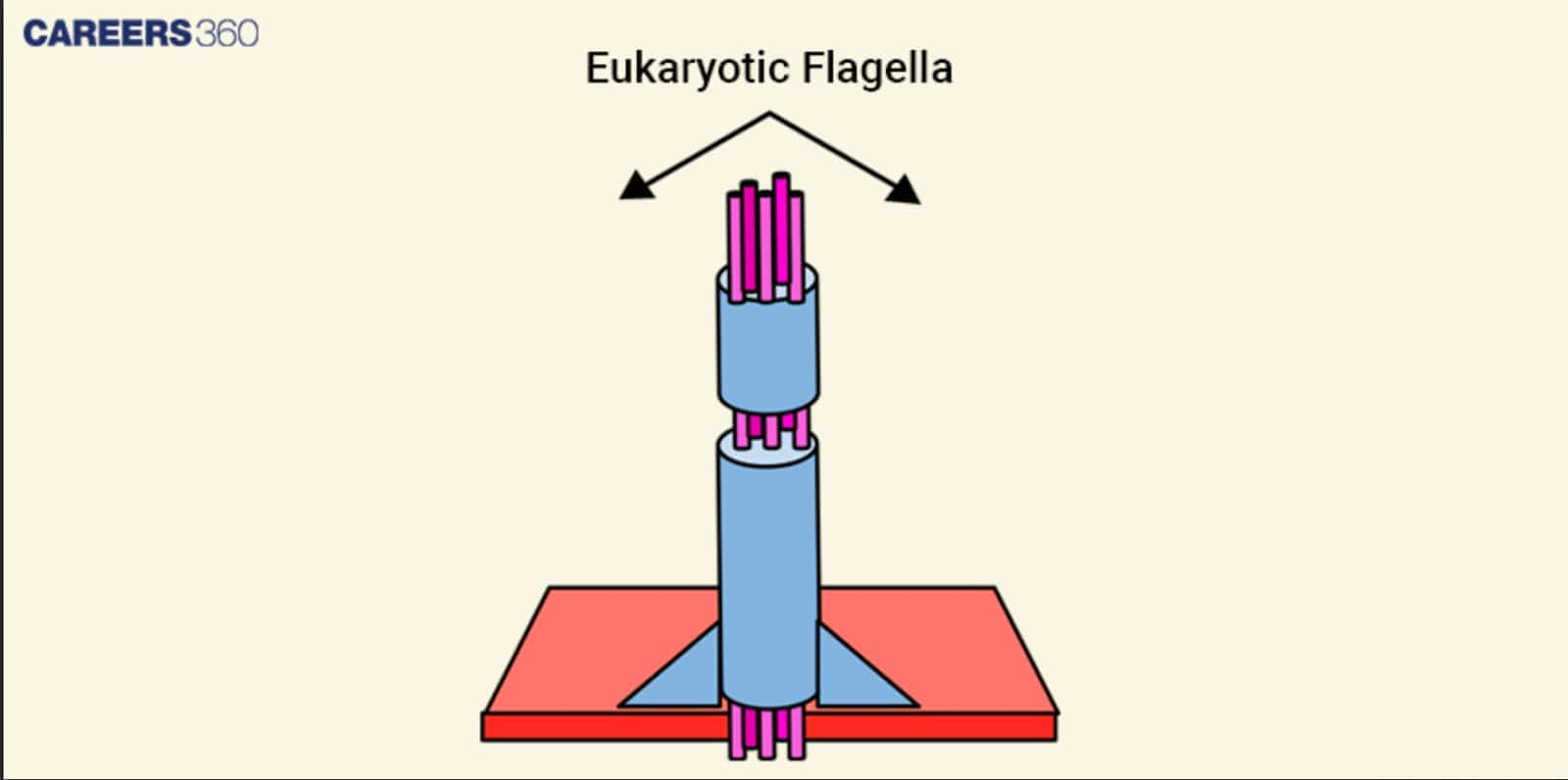
Archaeal Flagella
Archaeal is the other type of basal body found in archaeal cells. It has a different protein makeup and assembly procedure from bacterial flagella. It does not have a core passage and therefore is not tubular like bacterial flagella.
Movement: It is asserted that the flagella in archaeal organisms function in the same way as that in bacterial organisms but the power used is in the form of ATP and not a proton motive force hence the difference in the way the two flagella move.
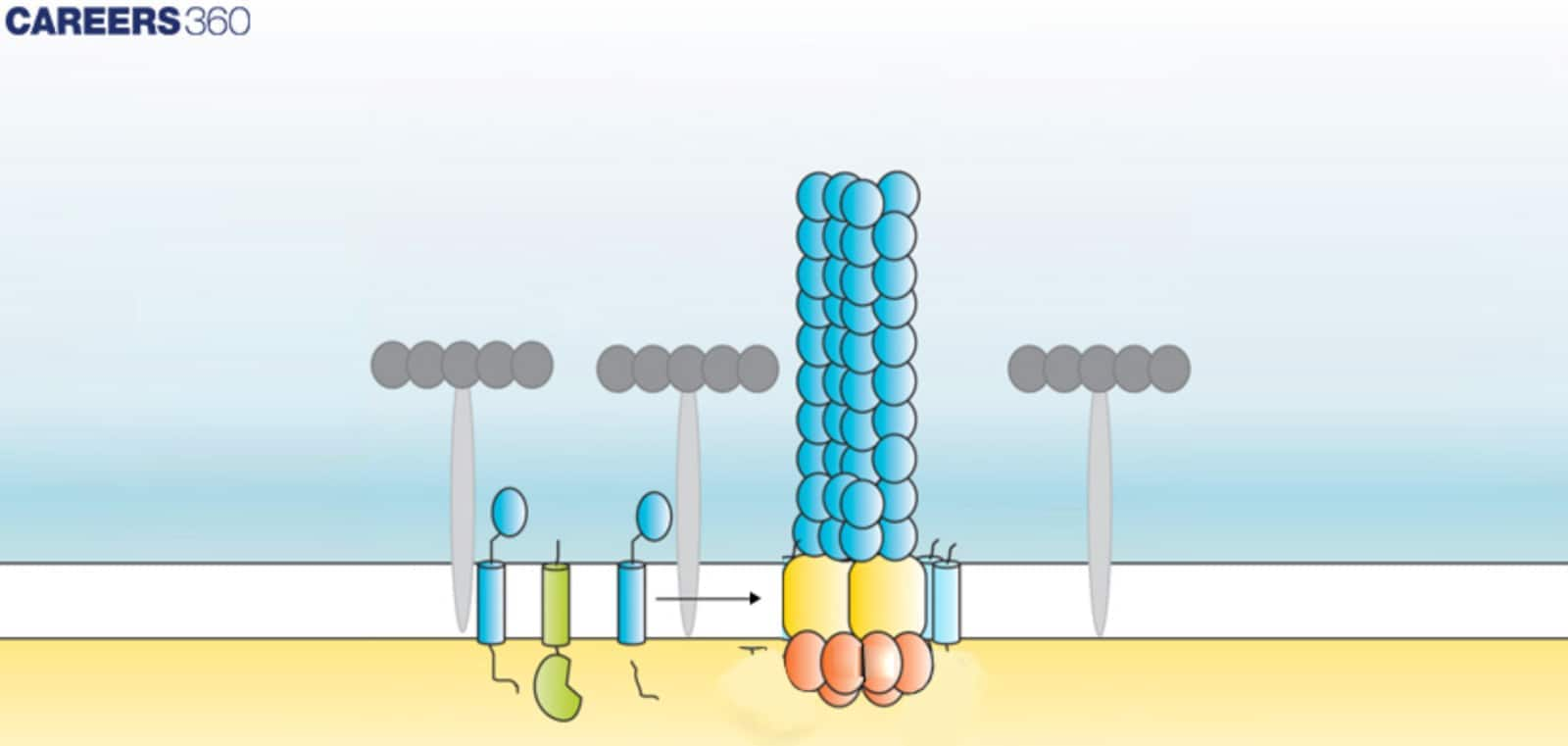
Types of Flagella (Based on Number & Arrangement)
Based on the number and the site of flagella,
Monotrichous Flagella
In a bacterial cell, one flagellum is inserted at one end of the cell. The shape of a bacterial flagellum is a long slender thread-like structure. This singular tail-like appendage propels the bacterium from spinning around but in a directed fashion.
Examples: Cholera is caused by Vibrio cholerae which is a bacterium that possesses one flagellum that assists it to swim on the villi on the surface of the intestinal lining.
Lophotrichous Flagella
These are several, situated at one and/or both poles of the cell. This organization provides higher efficiency compared to the movement with only one flagellum on the organism.
Examples: The bacterium that causes peptic ulcers, Helicobacter pylori, has a cluster of flagella by which it navigates through the thick mucus layer lining the stomach walls and through the mucus in the stomach.
Amphitrichous Flagella
Flagella are present at each end of the cell but only one of them is arranged. This way of a bacterium arranging allows this bacterium to move in both ways because the flagella can rotate in opposite ways.
Examples: In Spirillum volutans, which is a spiral-shaped bacterium, this structure is employed to move with a corkscrew-like motion in water habitats.
Peritrichous Flagella
The flagella are arranged all over the surface of the cell. This widespread arrangement gives better and broader power for the forces and directions of propulsion that make locomotion possible.
Examples: Peritrichous flagella are used by Escherichia coli, a common inhabitant of the gut, to move through the thick broth of the intestines.
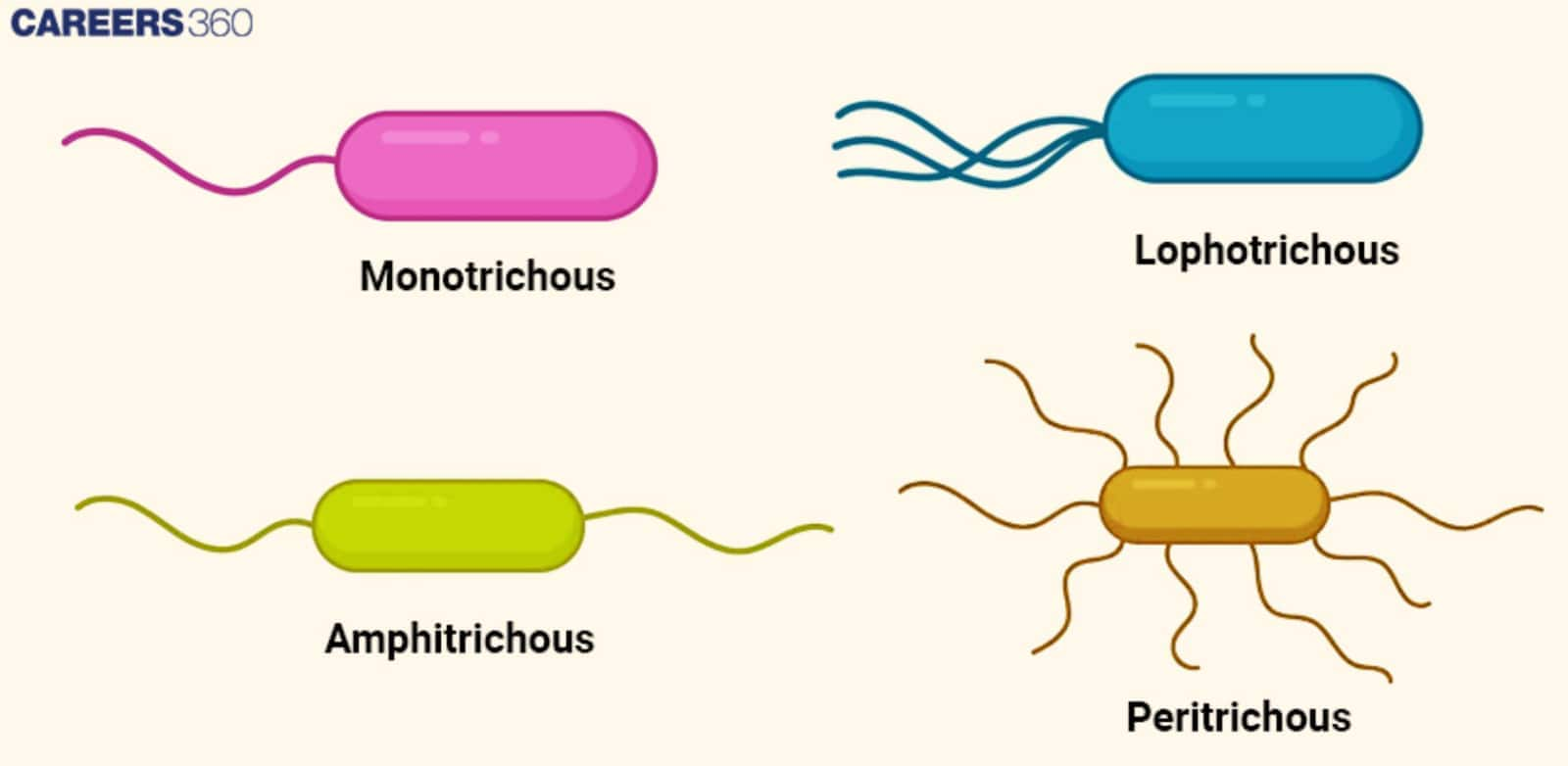
Microtubule Arrangement in Eukaryotic Flagella
The microtubule arrangement is described below:
9+2 Structure
Eukaryotic flagella have an axoneme core with this structure called the “9+2” structure: nine pairs of microtubules and two central microtubules. This structure helps in the flexibility of the flagellum since it requires bending to carry out its function effectively.
Role of Dynein Arms
Dynein arms are the motor complexes bound to the microtubules which produce force by the hydrolyzing nucleotide ATP. These proteins make the microtubules move past each other in a sliding motion giving the flagellum its whip-like behaviour.
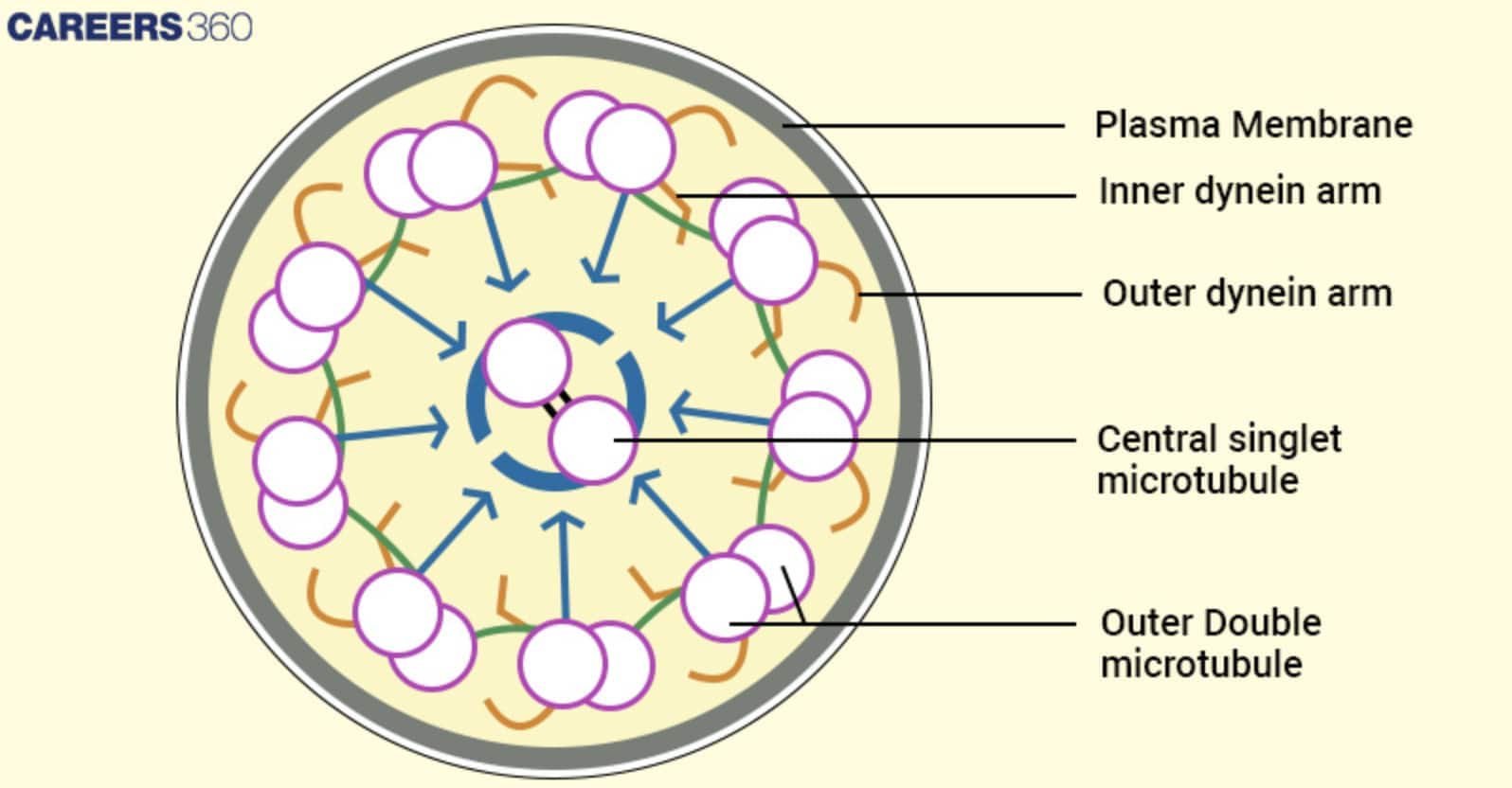
Function and Mechanism of Flagella
The function of flagella is listed below:
Locomotion
Flagella offer movement by rotating or beating, depending on the organism. In bacteria, the flagella act like a propeller to rotate and help the cell go forward. Flagella in protists and sperm cells move in a whip-like or wave motion to help the cell move through the liquid environments.
Chemotaxis
Flagella have the ability to swim in its direction towards substances that would be beneficial to the cell (positive chemotaxis) or away from substances that are detrimental to the cell (negative chemotaxis). This is done by changing either the direction or the rate of the movement of the flagella or by stopping the beat of the flagella and changing it to the other direction about the chemical gradients.
Sensory Functions
Alternative to movement, the flagella can work as the receptor organelles, to determine alterations in conditions of the cell. They aid in receiving chemical, temperature, and mechanical stimuli to fit the organism appropriately to the situation.
Comparison Between Prokaryotic and Eukaryotic Flagella
The following table shows the comparison between prokaryotic and eukaryotic flagella:
Feature | Prokaryotic Flagella | Eukaryotic Flagella |
Organisms | Bacteria, Archaea | Protists, Animal Cells (e.g., sperm cells) |
Structure | Simple, rigid, helical filament | Complex, flexible axoneme |
Main Component | Flagellin protein | Microtubules (tubulin) |
Motor Mechanism | Rotational | Wave-like undulation |
Energy Source | Proton motive force (bacteria), ATP (archaea) | ATP |
Movement | Clockwise or counterclockwise rotation | Whip-like, wave motion |
Basal Body | Anchored in the cell membrane, acts as a rotary motor | Anchored in the cell membrane, part of the axoneme |
Microtubule Arrangement | None | "9+2" microtubule arrangement |
Hook Presence | Present acts as a flexible connector | Absent |
Speed | High rotational speeds (up to 100,000 RPM) | Slower, coordinated wave motion |
Function | Mainly locomotion | Locomotion, sensory roles |
Examples | E. coli, Salmonella | Sperm cells, Trypanosoma, Euglena |
Flagella in Different Organisms
The types of flagella in different organisms are discussed below-
Bacteria (E. coli, Salmonella)
In bacteria such as E. coli and Salmonella, flagella are necessary for movements. It enables the microorganisms to move towards beneficial conditions and to move away from adverse conditions. The flagella rotate like propellers, and the motor is at the base of the flagellum.
Protists (Trypanosoma, Euglena)
Some protists have flagella, which they use to swim in aquatic environments. In Trypanosoma, flagella provide the means for the parasite to move through the blood vessels of the host. In Euglena, the organelles help it to swim towards the light to perform photosynthesis.
Human Sperm Cells
It is also concerned with the locomotion in human sperm where the flagellum is used to guide the sperm through the female reproductive tract to the egg to be fertilized. This is a key characteristic that is required for successful reproduction owing to the length of space that sperm has to travel to get to the egg.
Diseases and Disorders Related to Flagella
Any defects in the flagella can cause various medical conditions and affect the ability of a cell to move.
Flagellar Defects (PCD)
Primary ciliary dyskinesia (PCD) is a genetic disorder associated with structural or functional abnormality in cilia and flagella. This condition results in chronic respiratory tract infections, low fertility rates and other related complications since the cilia and flagella cannot move.
Pathogenic Bacteria (Helicobacter pylori)
In pathogenic bacteria like Helicobacter pylori, flagella have great importance in infection and disease progression. These bacteria can move within the mucus of the stomach that is thick with the help of flagella. Thus they can infect the gastric epithelium, which in turn causes certain diseases like gastritis and peptic ulcers. Flagella helps the bacteria find host tissues as motility is critical in the bacterial infection process.
Flagella NEET MCQs (With Answers & Explanations)
Important topics for NEET are:
Structure of Flagella
Types of Flagella
Microtubule arrangement
Eukaryotic vs Prokaryotic Flagella
Practice Questions for NEET
Q1. Which arrangement of microtubules is present in the flagellum?
9+0
9+2
11+0
11+2
Correct answer: 2) 9+2
Explanation:
The flagellum is characterized by a distinctive 9+2 microtubular configuration, comprising nine peripheral doublet microtubules arranged cyclically around a pair of central singlet microtubules.
Components:
1. Outer Microtubule Doublets: The external layer consists of nine sets of microtubules, each forming a structural duplex.
2. Central Microtubules: Two solitary microtubules are positioned centrally within the doublet ring, contributing to the flagellum's stability and movement mechanism.
3. Proteins: a. Dynein Arms: These are the motor proteins affixed to the doublet microtubules, facilitating the coordinated sliding of the tubules to generate the necessary propulsion.
b. Nexin Links: These are the interconnecting proteins that provide structural integrity by linking adjacent doublets.
Function:
The 9+2 organization permits the flagellum to exhibit flexural movements akin to a whip, which is crucial for the motility of certain eukaryotic cells, such as sperm cells and unicellular entities like Euglena. This structural setup underpins the efficient movement of these cells through their respective environments.
Hence, the correct answer is option 2) 9+2.
Q2. There are two bacterial cells. Cell A can move in water while cell B cannot move in water. What do you conclude from it?
Cell A has flagella but no centriole.
Cell B lacks flagella and centriole.
Cell B have centriole as well as flagella.
Cell A has centriole but no flagella.
Correct answer: 2) Cell B lacks flagella and centriole as well
Explanation:
The filamentous organelles known as bacterial flagella propel the movement of the cell. When animal cells divide, the centrioles create the spindle fibres that become the spindle apparatus as well as the basal body of cilia or flagella. Hence option 2 is the correct answer.
Explanation for the incorrect options :
Option 1 is incorrect because cell A has flagella hence it is moving. Flagella have formed from Centriole. Hence, cell A has both flagella as well centriole.
Option 3 is incorrect because cell B is not moving which means they are not having flagella. Flagella is form from centrioles. Hence, cell B lacks both centriole and flagella
Option 4 is incorrect because cell A has flagella hence it is moving. Flagella form from centriole. Hence, cell A has both flagella as well centriole.
Hence, the correct answer is option 2) Cell B lacks flagella and centriole.
Q3. The motile bacteria are able to move by:
Fimbriae
Flagella
Cilia
Pili
Correct answer: 2) Flagella
Explanation:
Cilia and Flagella are hair like outgrowths of the cell membrane, responsible for cell movement.
- wherein
Flagella in prokaryotic cells - If present, are single stranded, and without differentiation of axoneme and sheath and helps in movement of bacteria.
Hence, the correct answer is option 2) Flagella
Also Read:
Recommended Video for Flagella
Frequently Asked Questions (FAQs)
Flagella are involved in the process of locomotion using whirling or waging movements. Bacterial flagella spin like a propeller while those of eukaryotic cells describe a pattern of coordinated to and fro motion called the whip-like motion.
Flagella exist in different forms in different organisms belonging to the various domains of life. Some examples are bacterium Escherichia coli and Salmonella, protists Trypanosoma and Euglena and sperms of man.
Flagella are long, whip-like structures on the cell surface of many microorganisms that are mainly involved in movement and feeling. They facilitate movements within the fluid media.
Bacterial flagella operate through the proton motive force, and eukaryotic flagella operate through ATP.
Flagella consists of structures that are specific to the cytoplasm of cells and flagellin is the main protein in bacterial flagella. Eukaryotic flagella are made of tubulin proteins and motor proteins such as dynein arms. Other proteins like pericentrin are also involved.